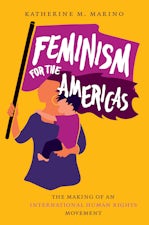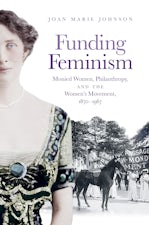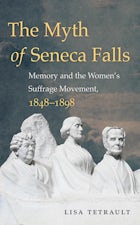Recasting the Vote
How Women of Color Transformed the Suffrage Movement
By Cathleen D. Cahill
372 pp., 6.125 x 9.25, 24 halftones, notes, bibl., index
-
Paperback ISBN: 978-1-4696-6612-9
Published: August 2021 -
Hardcover ISBN: 978-1-4696-5932-9
Published: November 2020 -
E-book EPUB ISBN: 978-1-4696-5933-6
Published: September 2020 -
E-book PDF ISBN: 979-8-8908-5432-2
Published: September 2020
Buy this Book
- Paperback $29.95
- Hardcover $32.50
- E-Book $19.99
For Professors:
Free E-Exam Copies
Awards & distinctions
Honorable Mention, 2020 Armitage-Jameson Prize, Coalition for Western Women's History
Honorable Mention, 2022 President's Book Prize, Society for Historians of the Gilded Age and Progressive Era
As we celebrate the centennial of a great triumph for the women’s movement, Cahill’s powerful history reminds us of the work that remains.
About the Author
Cathleen D. Cahill is associate professor of history at Penn State University and the author of Federal Fathers and Mothers: A Social History of the United States Indian Service, 1869–1933, winner of the 2011 Labriola Center American Indian National Book Award and finalist for the 2012 David J. Weber-Clements Prize, Western History Association.
For more information about Cathleen D. Cahill, visit
the
Author
Page.
Reviews
"Written to coincide with the centennial of the 19th Amendment, this important book reminds us that the familiar stories of women's suffrage are woefully incomplete. . . . An essential work; highly recommended for scholars of the period and general readers interested in women's history."—Library Journal
"This spirited history situates the campaign for female suffrage within the broader narrative of civil rights. . . . Cahill’s widened focus links the battle for enfranchisement to currents of exclusion and empowerment that continue to shape the vote today."—The New Yorker
“Cathleen D. Cahill’s narrative-supplanting book . . . challenges the reductive, whitewashed accounts of how the 19th amendment was ratcheted through the political process. . . . Cahill’s text doesn’t merely add minority figures to the story of women’s enfranchisement, it proves it is impossible to tell the story without them.”—Tribal College Journal
"A much-needed perspective on the efforts to gain full suffrage for American women at the start of the 20th century. . . . An impressive corrective for those so long left out of this history."—CHOICE
“This book has set the bar for understanding the historical implications of the suffrage movement through the eyes of women of color in early twentieth-century America. Cahill has . . . . [A]n exquisite monograph.”—Journal of American Ethnic History
“Cahill has done a remarkable job of not only expanding the suffrage narrative, but successfully reorienting it . . . [this is] a text with the power to fundamentally change popular perspectives of the suffrage movement.”—North Carolina Historical Review




